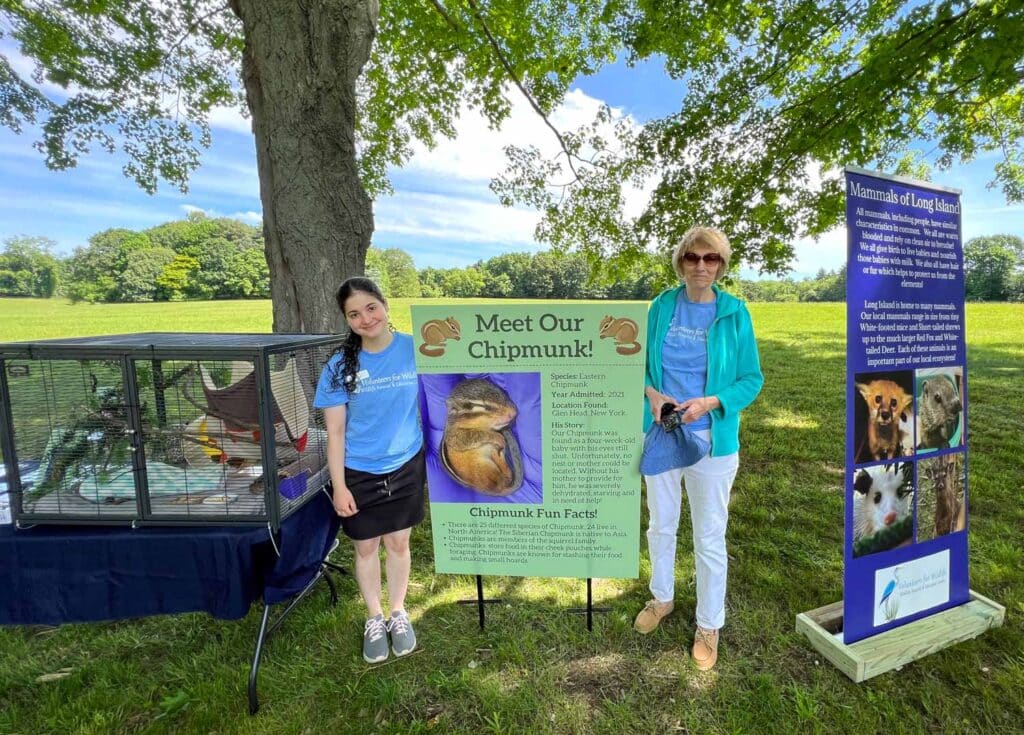Wildlife Walk Registration is Open!
Please join us for our annual Wildlife Walk!
Sunday, October 1
11am-3pm
The Seminary – Retreat & Conference Center
440 West Neck Road
Lloyd Harbor, NY 11743
Meet our animal ambassadors & learn about Long Island’s wildlife!
Open to all ages – pizza, drinks, & ice cream served.
Animal Ambassadors

Lady Turns 22!
Lady came to our rehabilitation center in 2001 as a juvenile, injured after she was hit by a car. Red-tailed Hawks sometimes fly into roadways in pursuit of prey such as rabbits and squirrels. The car collision caused irreparable damage to Lady’s left eye, requiring complete removal of the eye. Hawks need vision in both eyes to successfully hunt in the wild. Since she was a young bird and had not yet developed a fear of humans, the decision was made to keep Lady at our Center and have her join our team of animal ambassadors. Over the past 2 decades, Lady has met and helped us educate countless children and adults about her species!
Patient Spotlight

Young Herons Rescued
This duo of Yellow-crowned Night Herons arrived at our rehabilitation center last month as transfers from a wildlife center in NYC, The Wild Bird Fund. The birds were found on the ground after an illegal and intentional nest disturbance in Brooklyn. Sadly, these 2 are the only surviving babies of a nest of 5. After three long days on the ground without food, a Good Samaritan stepped up to get these birds help. The herons spent several weeks with us an in outdoor pre-release enclosure gaining weight, learning how to hunt, and preparing for life back in the wild. They have since been released into a beautiful nature preserve known for its large heron population!
Yellow-crowned Night Herons are a unique species nesting nearby the wetlands of Long Island. These herons are sometimes solitary nesters and, at other times, nest in larger colonies of many nesting pairs. They are found in the coastal communities of Brooklyn, Queens, the Five Towns, and the south shore of Nassau County. Adult birds are predominantly grey with a yellow crown on their head, whereas juveniles, as pictured here, are brown with white streaking and spotting to help them camouflage with their marshy habitat.


